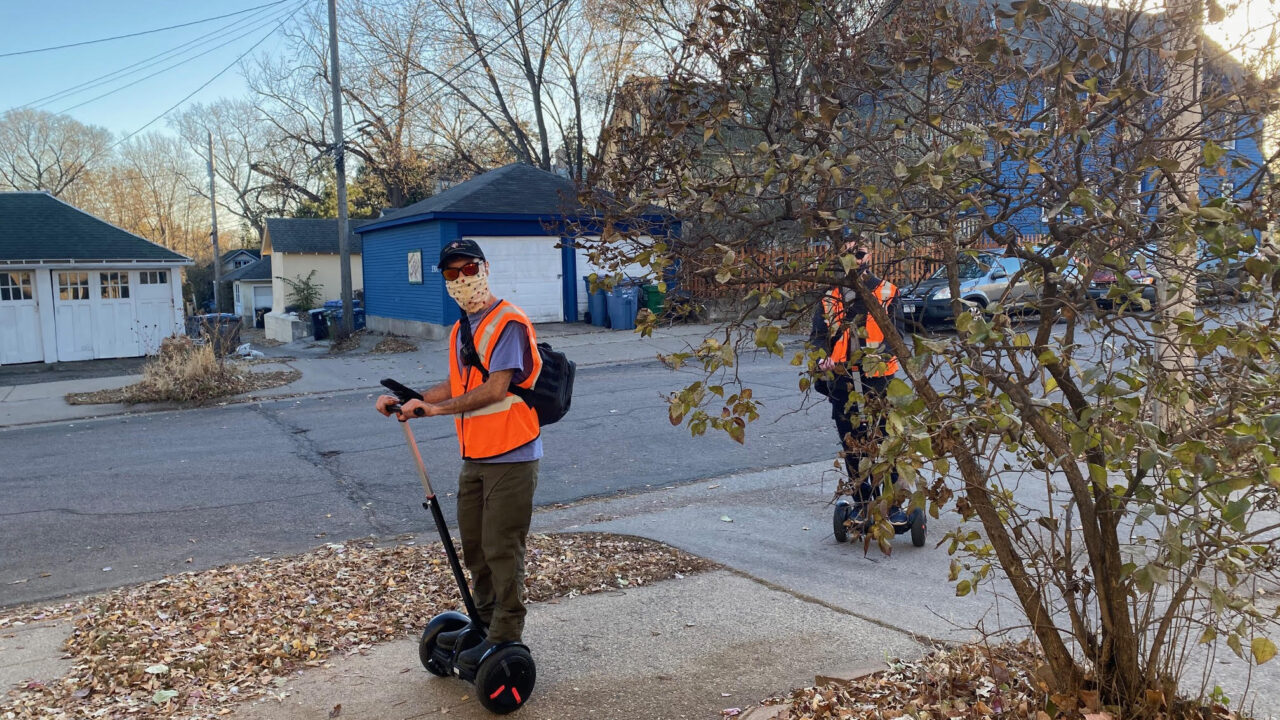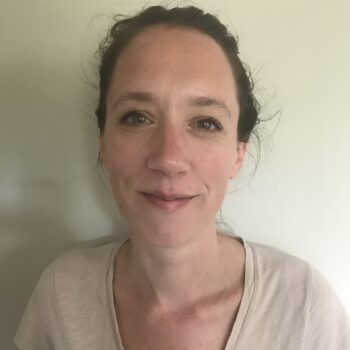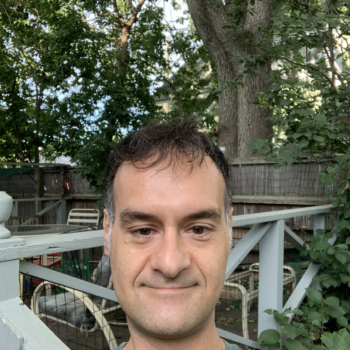Shortly after the uprisings began in Minneapolis last summer, white supremacists trickled into Minneapolis — smashing windows, looting businesses, and patrolling protestors. Local organizers quickly got together to form patrols to defend their neighborhoods and repel white supremacists. A number of them later formalized the block defense into the Powderhorn Safety Collective, a group of residents who watch the neighborhood surrounding the George Floyd Memorial without calling the police. The group is unarmed, nonviolent, and de-escalatory — providing a potential model of public safety under abolition. The Forge sat down with Pouya Najmaie, one of the founders of the Powderhorn Safety Collective, about his experiences dealing with white supremacists in the early days of the uprisings, the lessons he’s learned organizing a community watch in his neighborhood, and his thoughts on an abolitionist response to white supremacist violence. This interview has been edited and condensed.
Minneapolis dealt with an infusion of white supremacists into the city after George Floyd’s murder. Tell us about the block organizing that you and other folks in Minneapolis did to keep your neighborhoods safe.
[During the first few nights], it was all local activists and people who were upset about what was going on. By [the] third night, I started noticing more and more cars with out-of-state license plates. Then by Friday night, the looting had started in earnest. I stayed on Lake Street in front of a beloved puppet theater that has been around in the community since the early ’70s called Heart of the Beast. I observed a few people [who] just started smashing window after window [with] no purpose other than smashing. They would just walk down the street and smash, smash, smash, smash. By then, there were also rumors of KKK, Boogaloo Boys, Three Percenters, and other militia, like Oathkeepers, being spotted. [City councilwoman] Alondra Cano got us into groups depending on where we lived, and we all started talking with each other. I became the point person for my six-block square area.
By Saturday night, the curfew had landed. Most of us decided to go out and protect ourselves [despite the curfew]. Our neighborhood is extremely racially diverse. We were just very, very concerned about ourselves and our neighbors, and we decided to stay out. We armed ourselves with guns and had them at the ready, but we weren’t open carrying. A couple of our white neighbors [had their guns out in the open], and we quickly put an end to that because that was scaring a lot of people of color to have white guys with guns walking around.
As soon as it hit dark, even though there was a curfew, [there were a lot of] cars driving around without license plates. There were a few trucks with guys in the back with what looked like either lumber or bats, trying to intimidate us. Several areas around us were shot up. These guys would drive by and just start shooting, either up in the air or at houses. There’s a lot of houses in their neighborhood that took bullet holes.
After that, for the next two weeks, we had these white extremist groups coming in trying to instigate stuff with us. We had several times in which people — some of them wearing MAGA hats, some of them other identifiers — would observe community meetings or people gathering to organize. Sometimes, they would get out and try to instigate physical altercations with them. Luckily, none of our people would engage with them. We would come up, “Hey, how are you? What are you doing here? Can we help you?” By the time anything escalated, there were so many of our people around that these people would just leave.
How did you organize yourselves?
[We used two apps to organize.] Zello is like a walkie-talkie. It would go off in your pocket and you could immediately be in contact with whoever. Discord has a series of servers and channels. When everybody signs on, it’s instant communication [with multiple channels]. Within days, over 1,000 people in our neighborhood signed on. We had channels for admin and for people with legal expertise who were willing to help anyone that was arrested. We set up a channel for just about everything. It was a wonderful asset because we had eyes all over the neighborhood, which is how I knew about a lot of the stuff that happened outside of my area.
We had to moderate on Discord. Powderhorn is an extremely progressive, activist-type neighborhood. And it is a diverse neighborhood. There were people that were using descriptors that some of us were not comfortable with online. [For example, someone would say], “Black male wearing a hoodie coming down,” and we had to be like, “You know what? You don’t need the racial descriptors.” We moderated language when people would use words like perps, perpetrators, and criminals. We’d teach people the appropriate way to use this and stop using the language of the police.
We just took over our neighborhood. Because of the chaos of the uprising, the city allowed us to do this for the first several months. It was very empowering for all of us. It was really cool to have the freedom to be able to do these things, just straight up make an autonomous zone. We made our own speed bumps with gravel and cat litter because people would be racing down. There was a combination of white supremacists coming by and messing with our neighborhood, but there was [also] just crazy drag racing and shooting going on between certain gang elements.
Tell us about the Powderhorn Safety Collective. What lessons have you learned so far?
The Powderhorn Safety Collective came about to deal with white supremacists and the uptick in crime within our own neighborhood, but not deal with it in the way that the police deal with it. We’ve never called the police. We’re not into sending people to jail or incarcerating anybody. We try to deal with things [non-violently] through our own networks and our own resources.
The biggest lesson is to be in touch with your neighbors and to organize. Figure out ways to be in contact with each other. One thing we’ve struggled with is being inclusive to all our neighbors. The app we used, Discord, can be self-selective and exclusive if you’re elderly, not technologically savvy, or if people don’t speak English. We started a Discord Spanish channel. We reached out to as many Spanish-speaking people as we could. We started working with local Latinx groups.
There’s also a divide. We’re asking dark-skinned people to go out on watch and put themselves in a situation where the police could harass them. They’re in more danger and at more risk than most of the white people out here. One of the policies [we developed] is, we don’t talk shit to police. None of us like police. None of us trust police. None of us want the police to be around. [But] we don’t talk shit to them. A lot of these white folks wanted to be confrontational with the police. I very quickly put an end to that because here I am as a minority man walking out in the summer in the middle of the night with a high-vis jacket, walking towards gunshots. It’s very easy for white people to do this and to forget that some of us may be treated worse and not given the benefit of the doubt.
As an abolitionist, how do you think about the best way to respond to white supremacists without bolstering the carceral state?
I don’t have enough experience directly dealing with Three Percenters or Oathkeepers because we just repelled them in our neighborhood. I certainly don’t agree with just sending them all to jail. A lot of the insurrectionists at the Capitol are losing their jobs and probably won’t be able to get jobs in the future. Part of me is like, yeah, there needs to be consequences for this. What they did is terrible, and if you don’t give them consequences, people are going to do this again. At the same time, you get enough of these people doing this, what are you going to do with them? They still have these beliefs. I don’t believe in locking them up forever. What are you going to do with them? You’ve got to figure out something to do with them. I’m of two minds here. I don’t know what the answer is.


